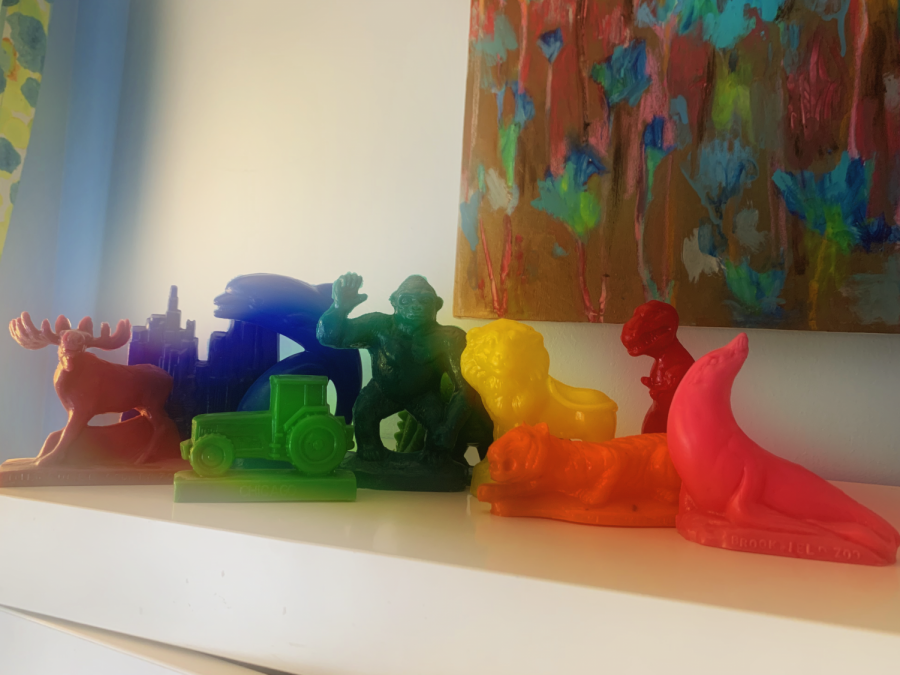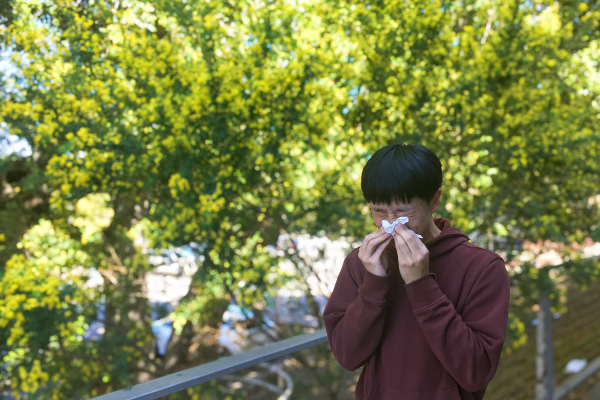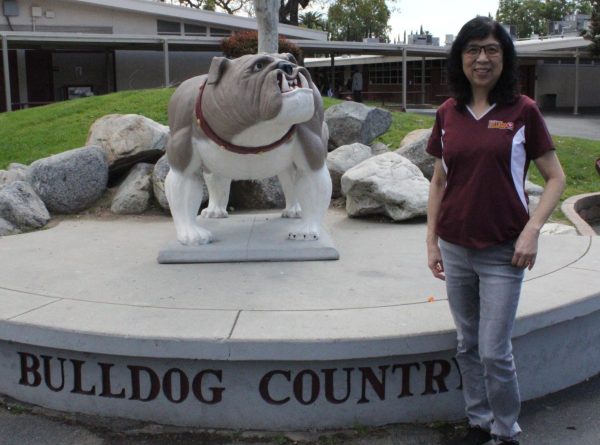Automatic Miniature Plastic Factory: How Mold-A-Rama Inc. survives and thrives amidst pandemic
Ursula Sturgeon
A selection of Mold-A-Rama’s colorful wax menagerie from the author’s personal collection.
March 5, 2021
Brookfield Zoo reopened to the public after two months of closure due to COVID-19 related lockdowns on March 1. In the weeks prior, similar places like museums and aquariums across Chicagoland were opening back up after the lockdown that had been prompted around the holidays. While there are restrictions– the indoor spaces, like the much-beloved Tropic World exhibit, are closed, for example– the zoo operates to a degree of normalcy.
One of the signs of the normalcy of the zoo is if slowly, returning tends to blend into the background to Chicagoans due to its familiarity. Its brightly-colored label and clear plastic dome remain unchanged, staring out into the eyes of zoo attendees just as it has for the last fifty-some years. ‘AUTOMATIC MINIATURE PLASTIC FACTORY’, its marquee-like backboard proudly reads. When a few dollars are fed to the boxy machine, it whirs and shakes, clamping its pistons together to create a small wax figure about the size of an apple.
It remains, on the surface, the same as it has for the last generation, and the generations prior- but under the hot metal surface, something new is beginning to bubble.
This is the story of Mold-A-Rama Inc., and the life it has led behind the pandemic’s closed doors.
CHAPTER ONE: THE HISTORY OF MOLD-A-RAMA
Every machine operated by Mold-A-Rama Inc. is over 60 years old.
The machines were originally built back in the mid-20th century by one J. H. “Tike” Miller. Miller had originally simply wanted replacement plaster figures for a family nativity set. However, when he found no stores sold replacement parts he found an opportunity and started a business of making plaster nativity figures. Plaster was eventually replaced with wax-like plastic due to plastic being the cheaper option to produce, and the nativity figures were soon replaced with increasingly-creative objects like jungle animals and space aliens. Eventually, through much experimenting, Miller got the idea of a small, consumer-sized replica of the machines that could be installed at tourist attractions to make souvenirs, along the lines of penny-pressing machines. He sold the idea to Automatic Retailers of America (ARA) Inc. shortly after. (You may know ARA today as Aramark, the same company that produces Metea’s lunch menu.) ARA set up its subdivision titled Mold-A-Rama Inc. for the manufacturing and upkeep of the machines, but after successful stints at World’s Fairs throughout the 60s decided it would be in their best interest to sell all Mold-A-Rama machines. Eventually, two companies formed to upkeep the remaining machines: Mold-A-Matic, who operates machines towards the east of the US, and Mold-A-Rama, who operates machines towards the west. Mold-A-Rama is a company familiar to Chicago.
Many of the machines you see now were in their current positions even before ARA disestablished the original Mold-A-Rama Inc. The machines that produce blue dolphins and pink sea lions outside Brookfield Zoo’s Seven Seas Pavilion, for example, were there in 1966 when Seven Seas first opened. Thus, the culture around Mold-A-Rama Inc. has been one of tradition and a nostalgic comfort that is best described not in words but by the unique waxy smell the souvenirs possess.
CHAPTER TWO: MOLD-A-RAMA-DOT-COM
Naturally, of course, the COVID-19 pandemic brought this sense of tradition and comfort to a screeching halt.When the pandemic first resulted in lockdowns, Paul Jones, Mold-A-Rama Inc.’s CEO, was in Texas, working the machines the company owns at the San Antonio Zoo. He got a call explaining that one of the locations that Mold-A-Rama machines are located in was to close over the weekend for a cleaning. At first, this was seen as nothing too disruptive. However, by that Monday, all ten Mold-A-Rama-affiliated locations around the country had closed indefinitely due to the pandemic. If Mold-A-Rama were to continue operation without the crowds it relied on, something was going to have to change.
“We have an online store, and we usually don’t sell souvenirs online… we decided we’re going to change that,” Jones said. the pandemic, Mold-A-Rama’s online store primarily sold company-themed apparel. However, since then, the souvenirs traditionally made by the machines in-person have been sold through the online store in addition to apparel. The online store souvenirs tend to be pricier than their in-person counterparts. But, in addition to shipping costs, the extra money also goes to many of the locations that are affiliated with Mold-A-Rama to assist them during the financial crisis COVID-19 has caused. Zoos, for example, are particularly hard-hit due to still needing to care for the animals while also having little to no revenue.
“When you close a zoo, things don’t just stop,” Jones said.
The online store model, while perhaps lacking some of the magic of watching a machine form a wax figurine right before one’s eyes, has been serving Mold-A-Rama Inc. well during this unusual time.
“We’ve seen a lot of activity in our store… we’re doing well,” said Jones. “It’s nothing like the usual business, but people can still get their Mold-A-Rama fix. This pandemic has been rough on everyone. We’re grateful for our fans and how loyal they are.”
CHAPTER THREE: OF DINOSAURS AND AUCTION-DEALING
In the meantime, Mold-A-Rama Inc. has been working on projects behind the scenes.
One trick the company has learned, for example, is using eBay to gauge how much it should sell certain figures for. Sometimes, on the online store, the company chooses to market a set of souvenirs the machines have not produced in decades. To estimate how much customers are willing to pay, Mold-A-Rama Inc. turns to eBay, putting one model at a time up for auction and taking note of the patterns in prices. This way, the company can turn a maximum profit without alienating its customers, to begin with.
In addition, the company has gotten a chance to take extra focus on new molds that it had previously not gotten much time to work on. For example, the company had been working with the Field Museum to create a mold based on a statue at the Field Museum of a Quetzalcoatlus (a large pterosaur). Because of Quetzalcoatlus’s size and unique features, translating it into a mass-produced mold was proving difficult. During quarantine, the company was able to refocus itself on the project and left a new artist at the helm of making the mold. The new mold was finally able to be completed and now is up for sale at the recently-reopened Field Museum.
The company has also focused itself on new technologies such as 3D imaging to create new molds and products. This has led Mold-A-Rama Inc. to be able to create molds that were previously too difficult to make. For example, originally, the machines had a set of dinosaur molds that premiered at the 1964 World’s Fair for the Sinclair Dinoland attraction. However, the molds were big and unwieldy and proved cumbersome to work with. So, to work with the issue, new molds were created that served as smaller replicas of the originals. These molds are still used today, and can still be purchased at machines like the ones that operate in the basement of the Field Museum. One mold, unfortunately, proved near-impossible to replicate- the Ankylosaurus. For decades it remained untouched, resulting in the Dinosaur set of Mold-A-Rama machines being something of a Missing Man Formation. However, thanks to the 3D imaging the company has worked on during COVID-19, the Ankylosaurus will finally be able to be produced in a smaller size later this year, and will- after nearly half a century- rejoin its waxy siblings.
CHAPTER FOUR: CONCLUSION
Despite the changes and new challenges of the pandemic, Mold-A-Rama Inc. primarily works in the name of keeping a dream alive. Consistency is part of the key to the machines’ success- while other souvenirs have constantly tried to one-up each other, Mold-A-Rama and its quaint simplicity have made it a favorite among generations of Chicagoans. When an adult walks up to a Mold-A-Rama machine, it is the same one that greeted them all those years ago when they were a child.
“We want every person who walks up to a Mold-A-Rama to get the exact item they want,” said Jones.
Perhaps there is something that can be learned from that nostalgic wonder. There is a sense that the past is part of the key to the future. While some of these changes to Mold-A-Rama’s business formula will likely persist long after the pandemic ends, it’s the sense of a great, magnificent thing, an eighth wonder of the Chicagoan era, being kept alive that truly breeds that sense of innovation. What makes Mold-A-Rama machines and their menagerie of waxy plastic figures special is not the machines or figures themselves or anything within them. It is the sense of partaking in a momentous, almost mystical little urban miracle, the sense that something truly indescribable, an ancient-yet-new emotion is being poured into the metal molds alongside the wax.
When I asked Doug Jones what his favorite of all the molds, he hesitated for a moment before deciding on the gorilla mold that populates many of the zoos Mold-A-Rama is tied to. He reasoned that it was tied back to a lot of things for him and that the gorilla was not only popular but constant, always the same black animal with a single arm raised in a friendly wave. I think that sums up a lot of the magic of Mold-A-Rama- and why the Automatic Miniature Plastic Factory will certainly survive for generations to come.
This story was originally published on Metea Media on March 4, 2021.































![IN THE SPOTLIGHT: Junior Zalie Mann performs “I Love to Cry at Weddings,” an ensemble piece from the fall musical Sweet Charity, to prospective students during the Fine Arts Showcase on Wednesday, Nov. 8. The showcase is a compilation of performances and demonstrations from each fine arts strand offered at McCallum. This show is put on so that prospective students can see if they are interested in joining an academy or major.
Sweet Charity originally ran the weekends of Sept. 28 and Oct. 8, but made a comeback for the Fine Arts Showcase.
“[Being at the front in the spotlight] is my favorite part of the whole dance, so I was super happy to be on stage performing and smiling at the audience,” Mann said.
Mann performed in both the musical theatre performance and dance excerpt “Ethereal,” a contemporary piece choreographed by the new dance director Terrance Carson, in the showcase. With also being a dance ambassador, Mann got to talk about what MAC dance is, her experience and answer any questions the aspiring arts majors and their parents may have.
Caption by Maya Tackett.](https://bestofsno.com/wp-content/uploads/2024/02/53321803427_47cd17fe70_o-1-1200x800.jpg)
![SPREADING THE JOY: Sophomore Chim Becker poses with sophomores Cozbi Sims and Lou Davidson while manning a table at the Hispanic Heritage treat day during lunch of Sept 28. Becker is a part of the students of color alliance, who put together the activity to raise money for their club.
“It [the stand] was really fun because McCallum has a lot of latino kids,” Becker said. “And I think it was nice that I could share the stuff that I usually just have at home with people who have never tried it before.”
Becker recognizes the importance of celebrating Hispanic heritage at Mac.
“I think its important to celebrate,” Becker said. “Because our culture is awesome and super cool, and everybody should be able to learn about other cultures of the world.”
Caption by JoJo Barnard.](https://bestofsno.com/wp-content/uploads/2024/01/53221601352_4127a81c41_o-1200x675.jpg)














